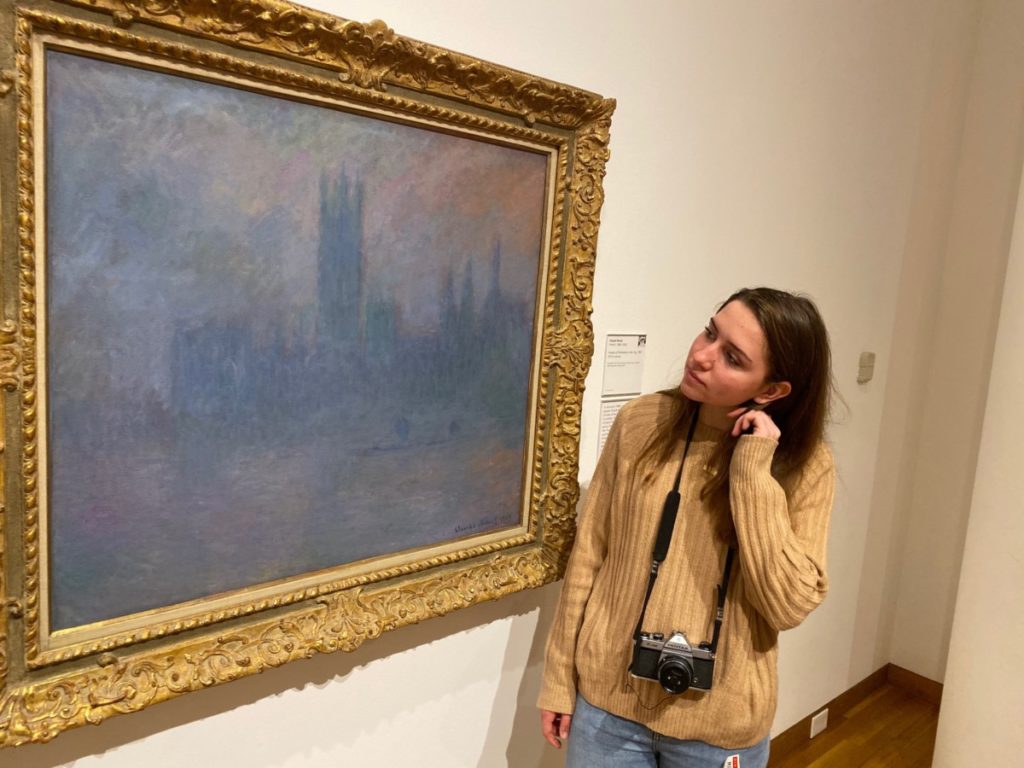As an avid thinker and enjoyer of the arts, I often find myself questioning what the definition of art is. This definition is extremely hard to obtain, mostly because all people perceive art differently. Art, as an experience, is incredibly different for every person who observes it. In my “Arts on the Brain” class, the concept of synesthesia was talked about. Synesthesia is the idea that the stimulation of one sense can give rise to a sensation in another sense. To me, synesthesia gives a whole new depth to the question of what art is.

The idea of stimulating more than just our hearing when listening to a song or more than just sight when looking at a painting is incredibly foreign to a lot of people. However, a large number of humans experience this often, and it is just part of their perception of art. Synesthesia has caused great debate on the organization of senses. The most accepted theory is the modularity thesis, the idea that humans possess 5 independently functioning senses. The other theory is the unitary thesis, the idea that humans have one integrated sensory organ with five sub organs (sight, smell, touch, hearing, and taste). Throughout history, both artistic and psychological experiments have been done to try and establish a conclusion to this enigma.
For example, at the end of the 19th century, Scribian, a Russian composer, investigated emotional effects synesthesia has on colors as music shifted from one key to the next. He believed that showing different colors as the music played would intensify the experiences of both senses. His perfect conditions for this experiment, which included a flood of light into the concert hall, were never met.
Also, The artist group, Der blaue Reiter, used painters, composers, dancers and theater producers to investigate synesthesia. The aims of the artist group were focused on: unification of the arts , freedom of expression, and spirituality. The unitary thesis of senses, was the basis for these artist’s experiments. This description of senses as being dependent on one another went against many psychologist theories of the time.
On the scientific side of things, Georg Sachs, a physician, published a study on “color hearing”. He used himself and his sister as a case study and described the colored dots that would appear in his vision as he observed numbers, days of the week, letters and musical tones.
However, the modularity thesis claimed that synesthetic perception was the product of the conditioning of mental associations of sensory elements. And, Howells, a scientist, designed laboratory experiments were designed in which subjects were reinforced to distinguish two complementary colors with help of a low organ tone that was played before the a carmine red color was presented and a high organ tone before a blue-green one. After some time, Howells sometimes played the wrong tone before a color and observed how it affected how the subjects responded. Playing the wrong tone disturbed the color perception. Good tones made the color more clearly distinguishable. Howells concluded that synesthetic perception is a product of conditioning.
If anything, these experiments, done by both artists and scientists, have just proven that synesthesia is incredibly hard to understand, control, and manipulate. The senses can not simply be explained by a few experiments, as almost every time, different conclusions are drawn.
Bibliography
J. Harrison, and S. Baron-Cohen, “Synaesthesia: An Account of Coloured Hearing”, Leonardo27, No. 4, 343-346 (1994); S. Baron-Cohen and J. Harrison, Synaesthesia: Classic and Contemporary Readings (Oxford: Blackwell Publ., 1997).
Cretin Van Campen, “Artistic and Psychological Experiments with Synesthesia” No. 1, 9-14 (1999): Leonardo Music Journal